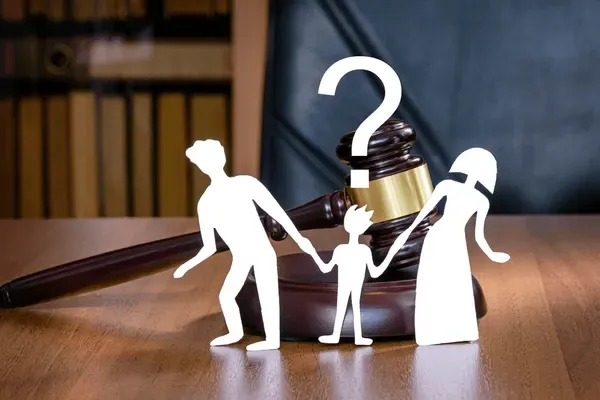Splitting a North Carolina State Employee’s Retirement Account
How to Divide a Retirement Account Post Divorce

You Need a Domestic Relations Order (DRO)
A Domestic Relations Order (a DRO) is one of the most important requirements for dividing a state employee’s retirement account.
What Is a DRO?
Retirement plans subject to the Employee Retirement Income Security Act (ERISA) can be divided through a Qualified Domestic Relations Order (QDRO). However, federal or state retirement plans aren’t subject to this act at all. Thus, a QDRO is not a suitable form for these plans. What they need is a unique form: a DRO.
A DRO is a form made according to state domestic relations law. It relates to child support, alimony, and marital property rights upon divorce. It is a necessary form for the division of all non-ERISA retirement plans.
ERISA vs. Non-ERISA Plans
The difference in forms that ERISA and non-ERISA plans require is not the only thing that separates the plans. Namely, the biggest distinction between them is the plan owner’s right to change particular items in the plan.
If someone with an ERISA plan wants to, for example, change the beneficiary listed on their plan, they cannot do so without a waiver from their spouse. This waiver would confirm that the spouse gives up their right to any potential benefits after the beneficiary change. Only after they sign this can any changes be made.
Non-ERISA plans, on the other hand, require no such waivers. A state or federal employee can change their plan however and whenever they want. They do not need any input or approval from their spouses.
Which Plans Require a DRO?
Any person that acquired their pension through employment with a state or federal agency needs a DRO. The two most common plans on this list are those for teachers and local government employees.
The two plans mentioned above are the so-called defined benefits plans. Participation in them is mandatory for all employees that qualify. However, even those who have a defined contribution plan instead need a DRO.
Defined Benefit vs. Defined Contribution Plans
The biggest difference between the two types of plans is connected to divorce. Namely, defined contribution plans can be divided upon divorce at any time. So, it does not matter whether the person with the plan has retired yet or not. You and your spouse can divide the benefits immediately upon signing the divorce papers.
Defined benefit plans are quite different. If your spouse has this retirement plan and you divorce them, you will not be able to receive your marital share until they officially retire. Thus, you cannot enjoy any of the benefits until your spouse begins receiving them, too.
Another difference between the plans is how they can be paid upon a divorce. A defined contributions plan can be divided into periodic payments or paid in a lump sum. A defined benefits plan, conversely, can only be paid through a stated percentage or dollar amount every month.
Who Can Draft a DRO?
Generally speaking, you can draft a DRO by yourself. My NC Retirement even provides you with some samples you can use in the process.
However, most experts advise that having an attorney help you draft a DRO is the best option. They have experience in the matter and know all the little tricks necessary to make a successful form. If you still wish to do it on your own, having a lawyer at least review your work before filing the form is a good idea.
Where Do You Send a DRO?
You should send a DRO to the court, as they are the ones who are ultimately responsible for submitting it to the Retirement Services Division (RSD). They can do that after a judge signs off on the form. However, before sending the document to a judge, you should send a draft to the RSD. Once they approve it, you can reach out to the court and send the form as explained above.
This intermediate step between drafting the DRO and sending it to a judge is necessary to correct any potential errors in the form. The RSD will pick up on any language that might need fixing or any terms that need changing for your DRO to go through.
Submitting a draft first can save you a lot of time and money, as the RSD can reject a form with any errors, no matter how small. Consult with them before involving a judge and the court, and you’ll be safe.
What Information Does a DRO Include?
We will start with the basics. Like any other official court document, a DRO has to include the name of your state and county, as well as the court which is handling your case.
Furthermore, you have to put the file number and the names of the defendant and the plaintiff. This information goes into the caption at the very beginning of the document. Then, you need to write the name and surname of the judge, the correct date, and all the relevant findings of fact.
These findings have to include the date of your marriage and separation, as well as that the parties have agreed to equitable distribution. Following this data, the DRO should say which retirement system the relevant spouse belongs to. This section should conclude with the exact sum of money a spouse will receive upon retiring and how those funds should be distributed.
Then, the actual order begins, including the amount of money each party will get after the state employee retires. This part should also include what would happen if the state employee dies before retiring. The DRO should conclude with the date and the judge’s signature.
Though this order might appear confusing, this form is actually one of the simplest ones out there. If you check out some of the samples available online, you’ll see it is relatively straightforward.
Final Thoughts
Dividing a state employee’s retirement account requires following a specific set of rules. One of the main ones is filing a successful DRO. We hope this guide helps you learn the basics of the process so you can do even more research and have a stress-free court experience.











